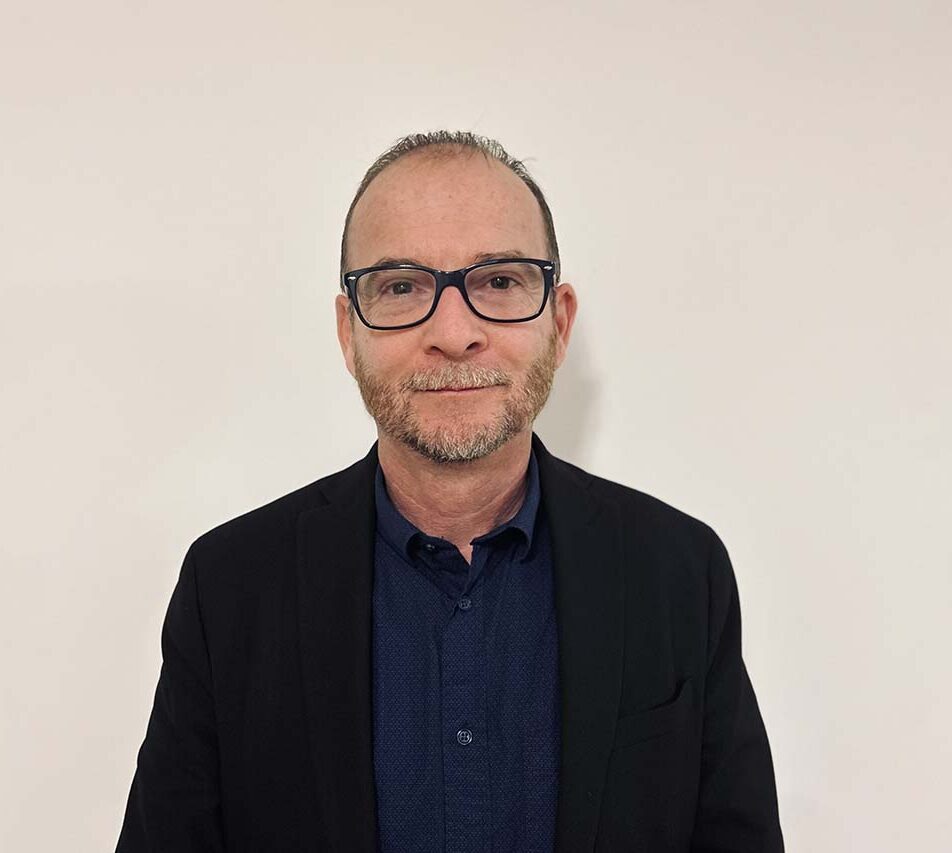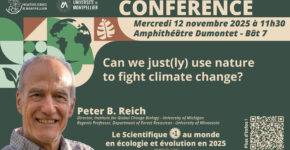Jean-Yves Winum: pure local product with a global aura
Professor at Institut des biomolécules Max Mousseron at UM, chemist Jean-Yves Winum designs and synthesizes enzymatic inhibitors of carbonic anhydrases, an interesting target for anti-cancer treatments and against various pathogens. A career rewarded by the Michel Delalande prize from the Académie nationale de pharmacie.

" I'm a pure product of Montpellier," Jean-Yves Winum laughs, his accent notwithstanding. The University of Montpellier professor did his studies and doctorate in organic chemistry at the same institution. And it was here, at the age of 27, that he obtained his position as a lecturer, just after returning from a post-doc at Georgetown University (Washington D.C.), just over a year after defending his thesis in 1998.
But don't be fooled into thinking that his horizons stop at the southern city. A recognized chemist in the scientific community specializing in the modulation of the enzymatic activity of carbonic anhydrases, theIBMM researcher has forged numerous international collaborations. His contribution to research on these enzymes as therapeutic targets for anti-cancer treatments or against pathogenic agents earned him this year's Michel Delalande prize from the French National Academy of Pharmacy.
Targeting carbonic anhydrases
Found in bacteria, plants and animals, carbonic anhydrases are involved in numerous biological processes. " When I first started working on these enzymes, some people considered them too common to be the key to therapeutic treatments, as the multitude of their functions raised fears of too many side effects ", recalls the chemist, who did not share this opinion. With his European colleagues, he distinguished, among the fourteen existing forms of carbonic anhydrases (CAs), the CA9 and CA12 preferentially expressed in cancerous tumors, and therefore preferential targets.
" Our initial work on carbonic anhydrases was aimed at inhibiting their activity in hypoxic solid tumors," explains Jean-Yves Winum. In tumors, these enzymes contribute to the acidification of the tumor microenvironment, which in turn contributes to the dissemination of tumor cells, and hence to metastasis. " Laboratory tests were conclusive: inhibition of these enzymes limited tumor expansion and breast tumor growth in vivo ". Results published in 2011 in Cancer Research in collaboration with other European teams, in particular the University of Florence.
Promising lead for an antibacterial agent
The researcher also worked on another, more unexpected therapeutic target: the carbonic anhydrases of Brucella, a bacterium dreaded at the time by bioterrorists. " We were working with Stephan Köhler's team (IRIM) on the inhibition of carbonic anhydrases in these pathogens to neutralize them ", he recounts(Brucella suis carbonic anhydrases and their inhibitors: towards alternative antibiotics? 2017, in Journal of Enzyme Inhibition and Medicinal Chemistry).
Interest in Brucella may have fizzled out, but research into antibacterial modes of action remains strategic at a time when antibiotic resistance has become a major concern for the World Health Organization (WHO). " Inhibition of the carbonic anhydrases of pathogens represents a promising avenue for antibacterial treatment, even if we're still at the basic research stage. There are no treatments in development at the moment ", says the chemist.
A chemist's flair
" I develop strong collaborations. Relationships based on trust are the best way forward ", stresses Jean-Yves Winum, who insists on the need to be able to rely on a close-knit international scientific community. While his Montpellier team works on inhibitor design and synthesis, the University of Florence is involved in enzyme testing, while other teams, notably in the USA, are involved in biological testing. " Some collaborations have led to solid friendships, such as with Claudiu Supuran from the University of Florence, with whom I've been working for over 20 years. We've published over 160 papers together.
Molecule design has also evolved rapidly with the improvement of X-ray structures : thanks to the synchrotron, researchers can observe enzyme-inhibitor interaction on a molecular scale, and improve their inhibitor molecule accordingly to make it as effective as possible. " We're moving towards a new generation of molecules that are more active and more selective ", explains the man who is convinced of the role of the chemist's flair. Proof of this is his latest award: " the distinction of a career as a chemist by the French National Academy of Pharmacy ", he says, not shying away from his pleasure.
Escape games and board games
Since 2016, in Montpellier, he has been developing a particular type of inhibitor incorporating boron atoms, a mineral that occurs naturally in soil, water and food. " Several therapeutic compounds contain boron so I thought it was worth a try on carbonic anhydrase inhibitors. And indeed, we've shown that it works very well! " Another promising area of research into anti-cancer agents, developed in collaboration with Sébastien Clément of theICGM, involves combining inhibitors with a photosensitizer. Under the effect of light, the photosensitizer produces singlet oxygen which destroys cancer cells, an action which adds to the inhibition.
In addition to his research, the man some colleagues describe as "hyperactive" also holds a number of other positions: deputy director of the Faculty of Science in charge of scientific communication and events, and associate editor-in-chief of the Journal of enzyme inhibition and medicinal chemistry. Since 2020, he has also been involved in the gamification of teaching, developing Escape games and board games as training aids(Jeux sérieux en chimie organique: apprendre en s'amuser en licence!) He has also co-authored six educational books. In 2023, his work earned him the French Chemical Society's Education and Training Division prize.
